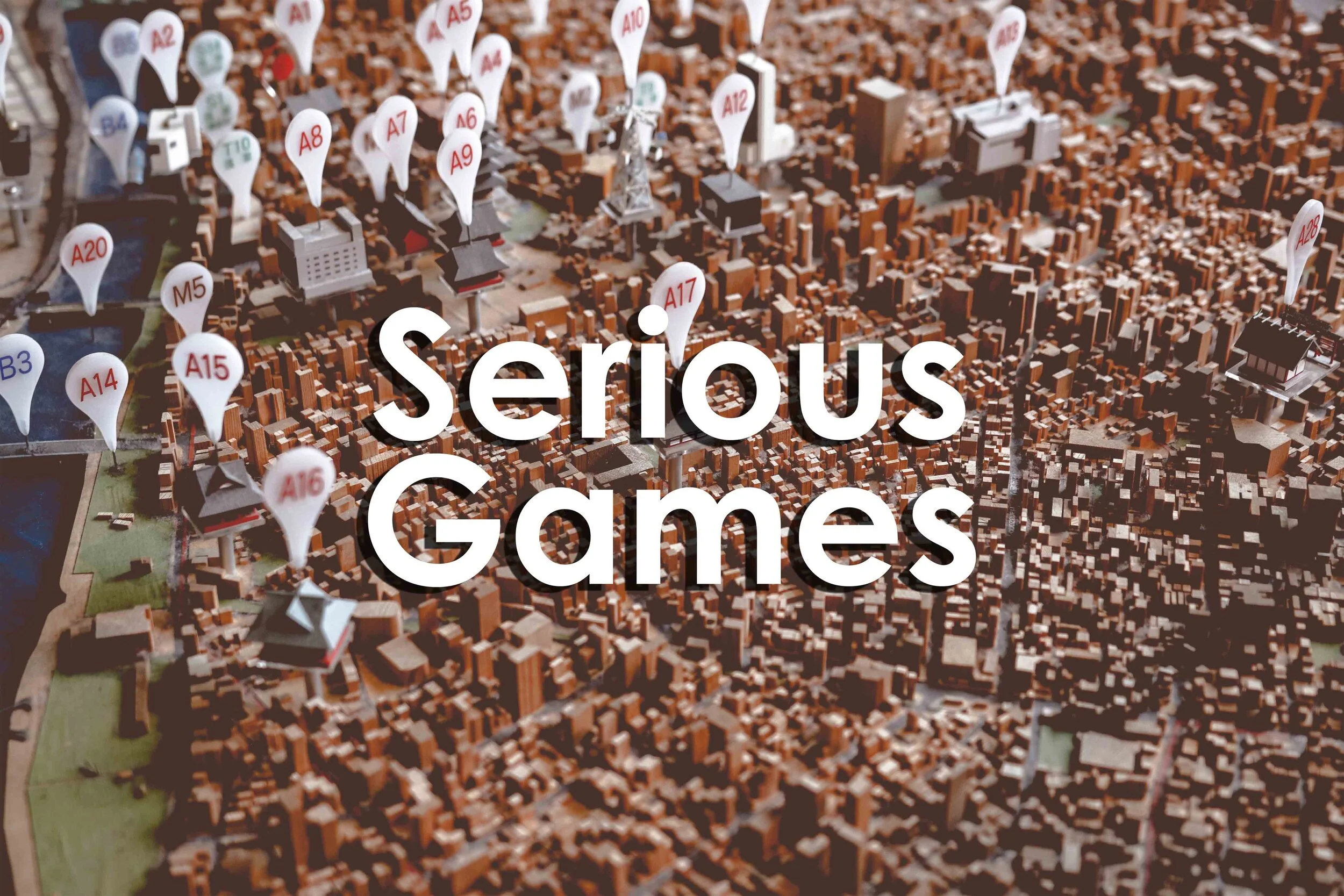What are serious games?
What are serious games?
What are serious games?
Many people already know what games are and how to define them. But do you know anything about “serious” games?
Serious games are games. But they’ve been designed with an educational purpose. Serious games were not created to be played for amusement or entertainment.
For other educators like myself, serious games offer a distinct advantage compared to using commercially available off-the-shelf games. When using those commercial games I have to work to adapt them to what I want my students to learn. Serious games on the other hand are available for teaching and learning right out of the “box.”
Serious games have allowed us to improve our teaching practices by using game structures, constructs, and scaffolding directly for learning.
What makes a serious game?
A serious game is distinct from other types of games for entertainment. Some serious games can be defined as simulations, models, or even sports.
One of my favorite pieces of technology is my FitBit. This tiny device tracks my steps as well as my stair count, active minutes, and distance on a daily basis. While on its face, FitBit is not a game, it does include some game like elements. Those are points for tracking my metrics, socialized leaderboards for competing against my friends, and a badges which modularize my achievements.
But the platform, which focuses on health and wellbeing, is as serious game. Here, my actions and activities serve an actual real-world impact. They help me maintain my health and activity when I would otherwise be sedentary.
How can you use serious games?
Serious games are designed from the ground up to be educational. But how can you use them in your own life? Whether that be in the classroom, at college, or in the office: how can you use serious games?
This is often the largest hurdle to surmount for educators. That’s because most educators are not programmers, developers, or designers. Instead, they focus on teaching, learning, and instruction of their students. That means that making tools available for educators is one of the primary considerations for serious games developers.
If you can make the tools, infrastructure, and support necessary for educators to create and adapt their own content, then you can have a virtually unlimited source of serious games.
Some of the most prominent tools for creating games for non-developers are:
Scratch - Imagine, Program, Share https://scratch.mit.edu/
TaleBlazer http://taleblazer.org/
Game Builder on Steam https://store.steampowered.com/app/929860/Game_Builder/
These platforms allow instructors, with varying degrees of technological ability, to create and showcase serious games for their students.
The table top advantage
Some educators are wary about learning new educational technology tools or are not comfortable programming content online. As table top game developer I empathize with this position. This is why I also advise educators to turn to table top development of games.
Creating table top games, card games, and board games, can be infinitely more accessible than their digital counterparts. That’s because all of the resources that you need are already in front of you.
Paper, playing cards, markers, scissors, tape, and glue are sometimes all you need to get a good game design going.
But the secret to making a really effective serious game is how an educator uses those materials to realize their vision.
Tips for creating your first serious game from scratch
So you’re in a position to create your first serious game. That is a big undertaking, but it’s not impossible. In order to make sure that the game you create meets your learner’s outcomes, it’s important to follow some important steps.
Living with inspiration: it’s not necessary to create an entire game SYSTEM from scratch. Rather, take a game that you already know well. Then begin to examine and tweak it. Ask yourself how the game mimics what you want your students to learn. Then begin changing structures, editing text, and adding different graphics.
What are we doing here: you want to provide your students with an overview and orientation of your serious game. This way they are provided with the necessary knowledge they need to play and learn. This also prevents them from feeling “lost” and confused by your game.
Multiple formats: your game should have multiple modalities. It is okay if you want to develop your serious game inside of your physical classroom. But don’t let it live there alone. Make it part of your homework and take home assignments. Ensure that your students discuss the game, activities, motivations, and actions. Make it an integral part of your class rather than just an addition.
Room for assessment: make sure that there is room for review and evaluation in your serious game. Remember that serious games are created from the ground up to meet some specific learning outcome. In order for that to happen, you need to also create some assessments to determine if your students are meeting those outcomes. These should be included both during and at the end of your course. Ensure that your students’ learning and evaluations are made a critical part of your game along its path to completion.
Serious games can be use for learning. So can gamification. To learn more about using gamification for learning, check out the free course on Gamification Explained.
Dave Eng, EdD
Managing Partner
dave@universityxp.com
www.universityxp.com
References
Fedwa Laamarti, Mohamad Eid, and Abdulmotaleb El Saddik, “An Overview of Serious Games,” International Journal of Computer Games Technology, vol. 2014, Article ID 358152, 15 pages, 2014. https://doi.org/10.1155/2014/358152
Cite this Article
Eng, D. (2019, May 07). Serious Games. Retrieved MONTH DATE, YEAR, from https://www.universityxp.com/blog/2019/5/7/what-are-serious-games
Internal Ref: UXP4XP6FJ1ZZ

